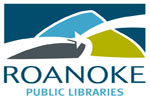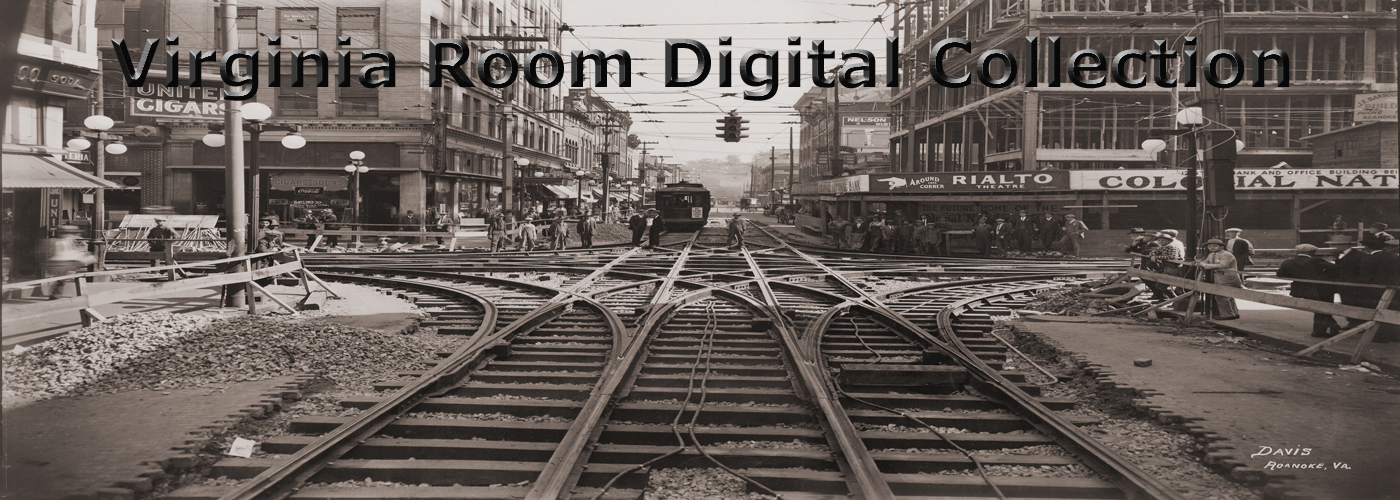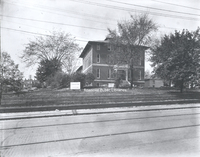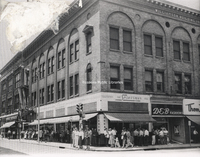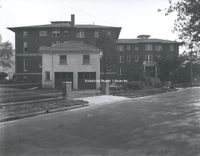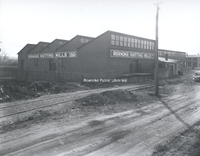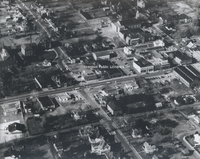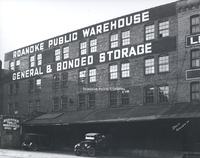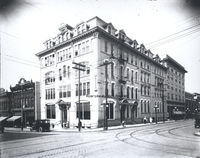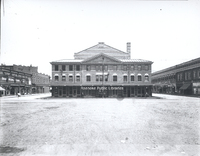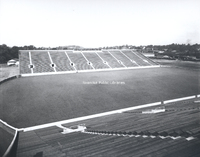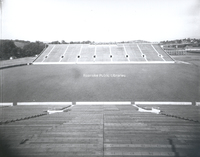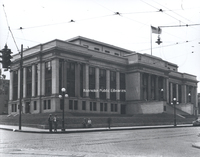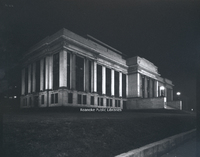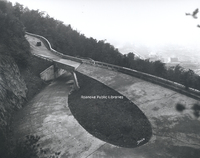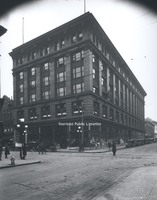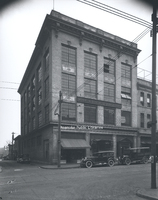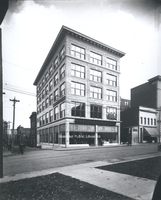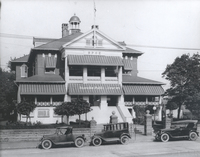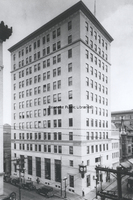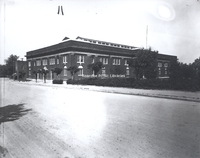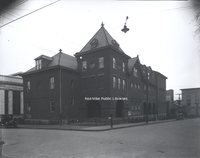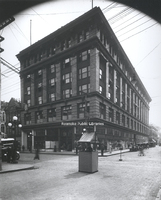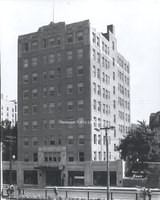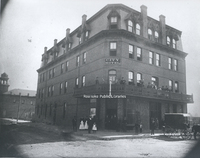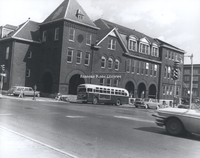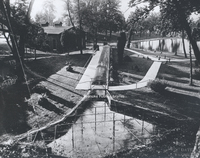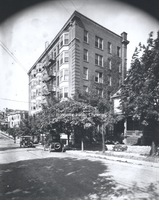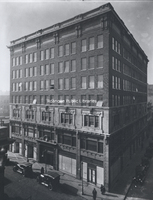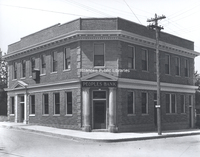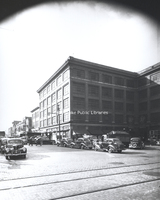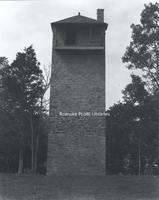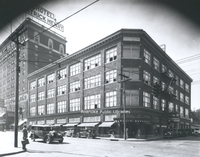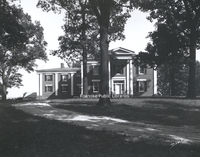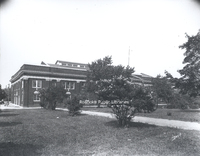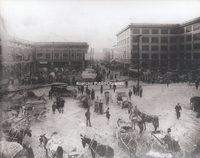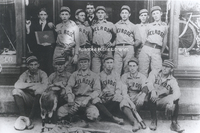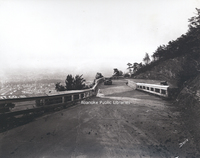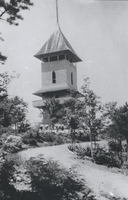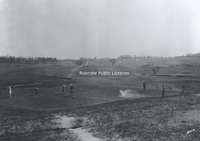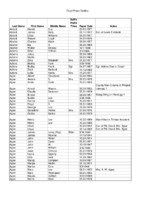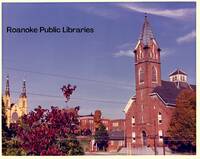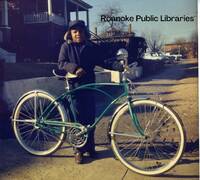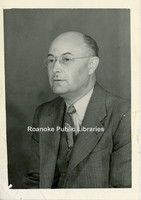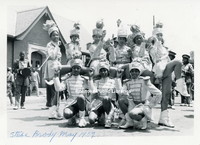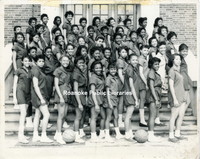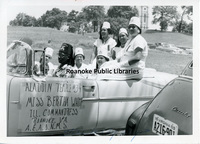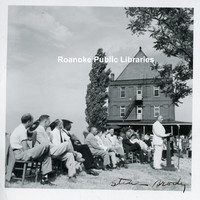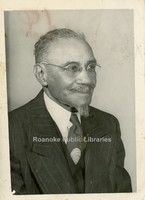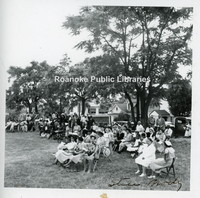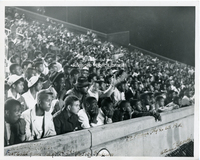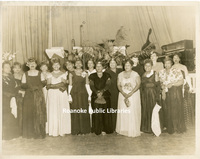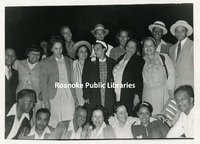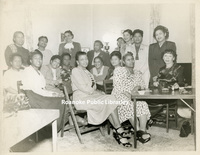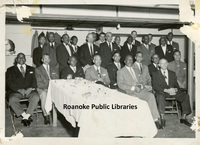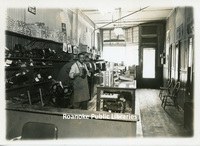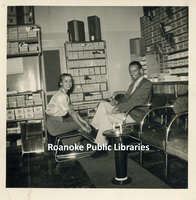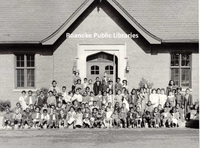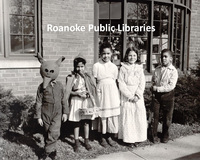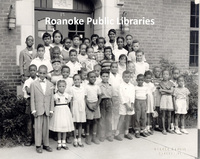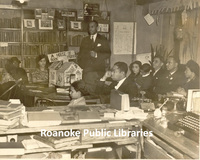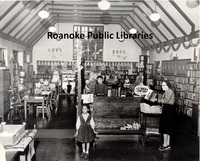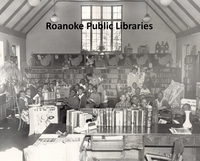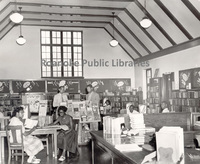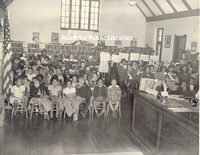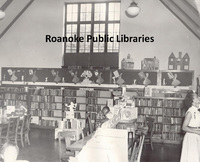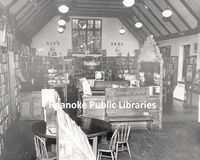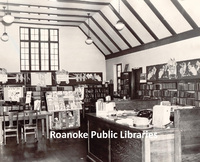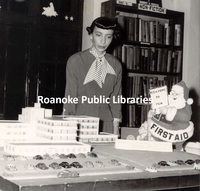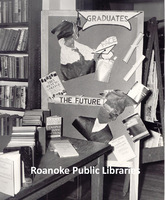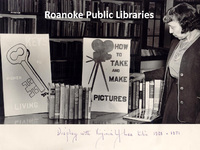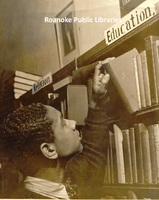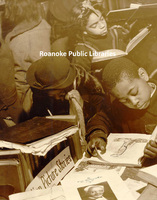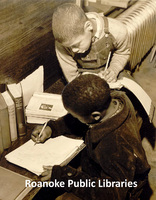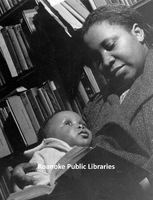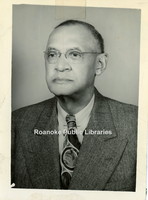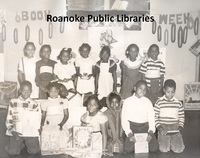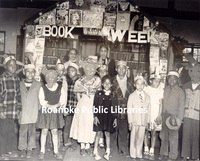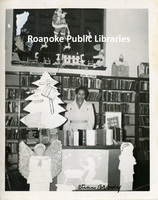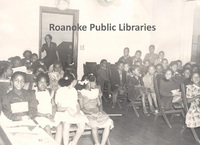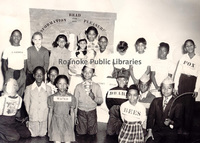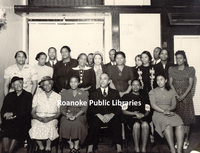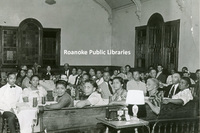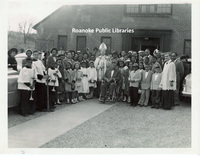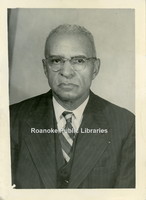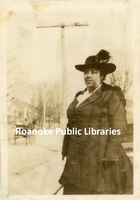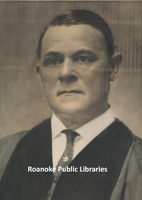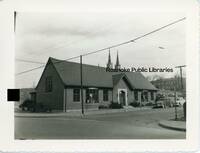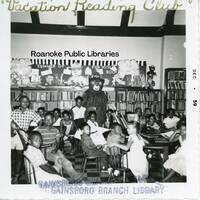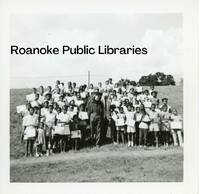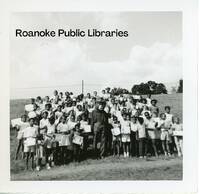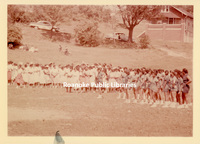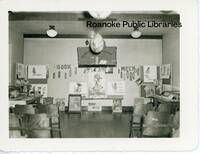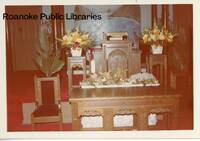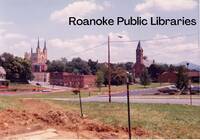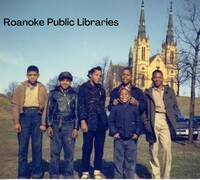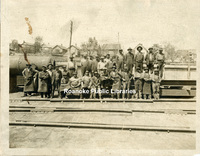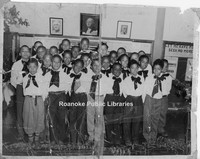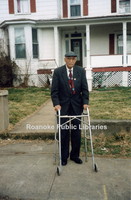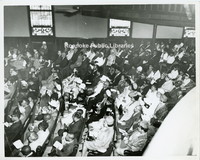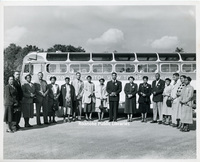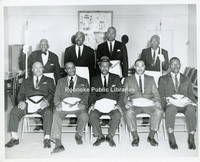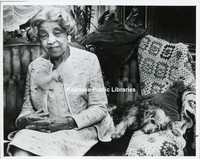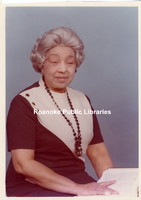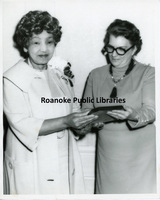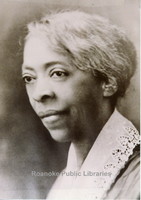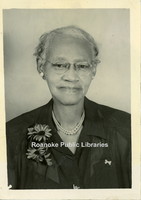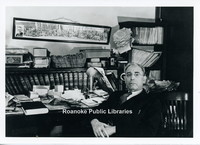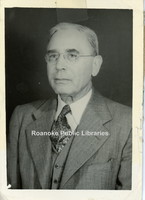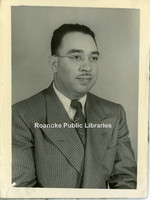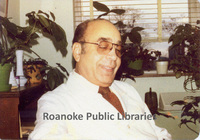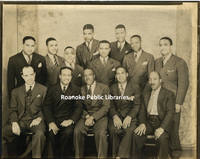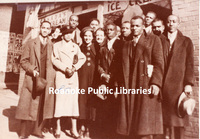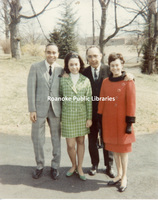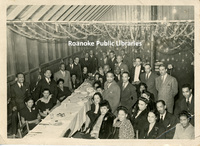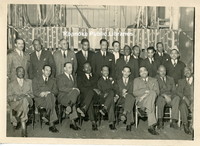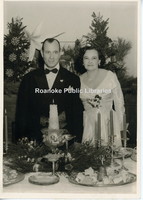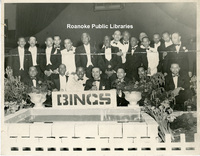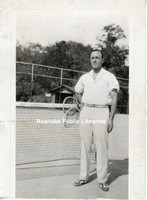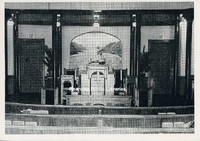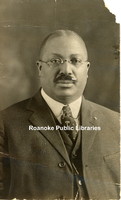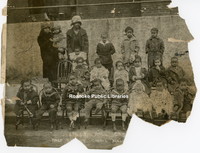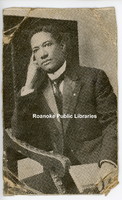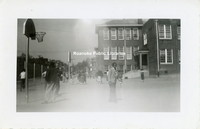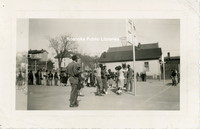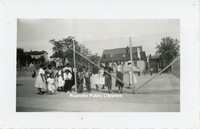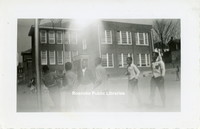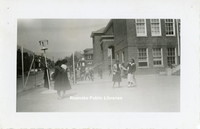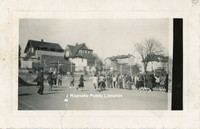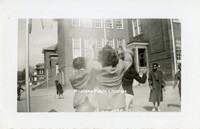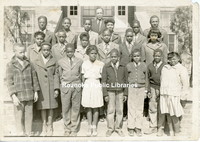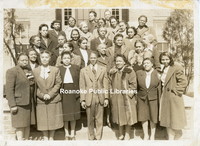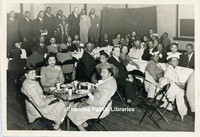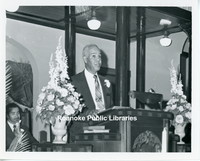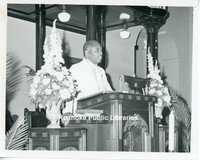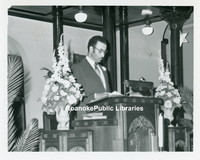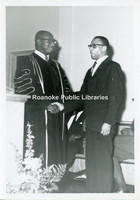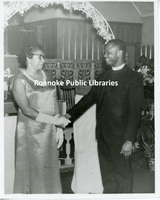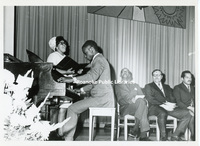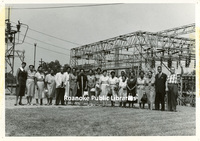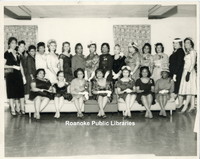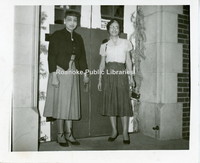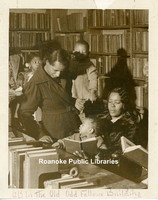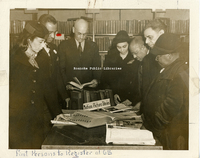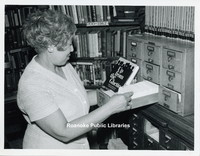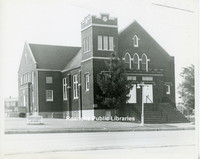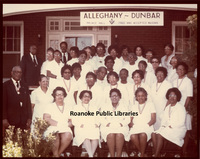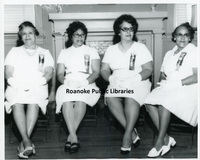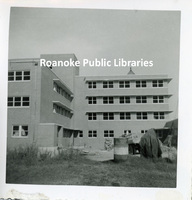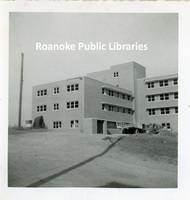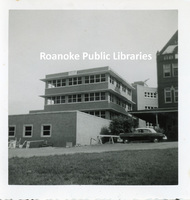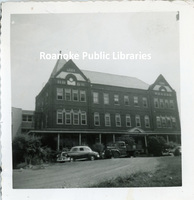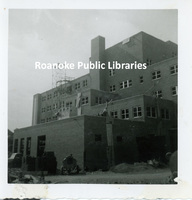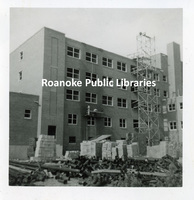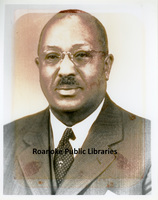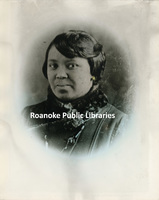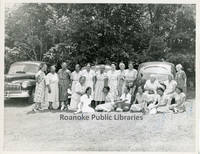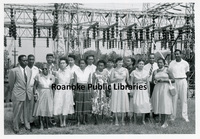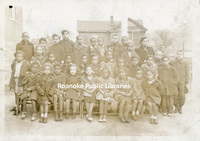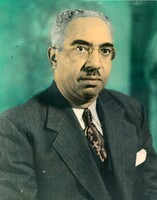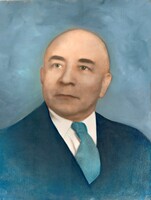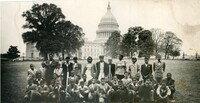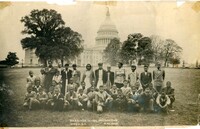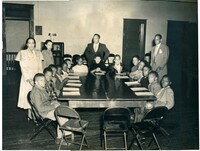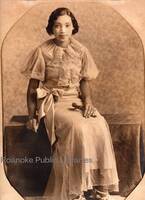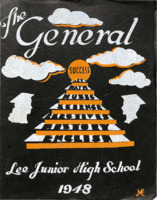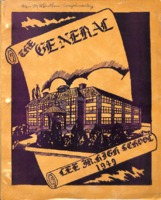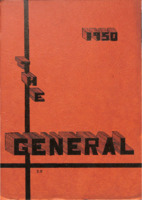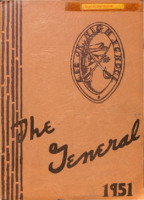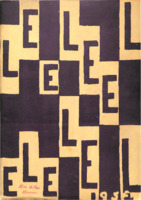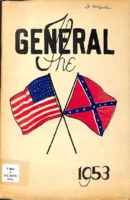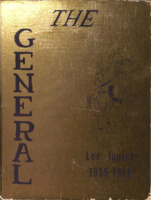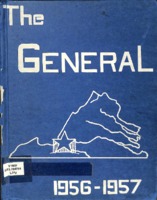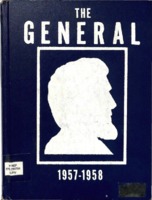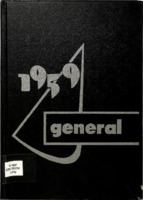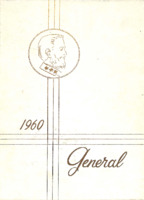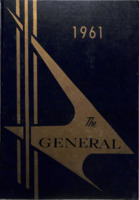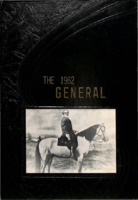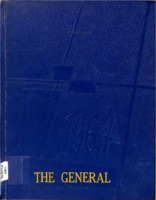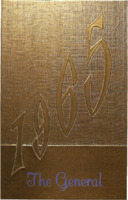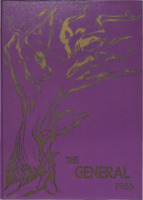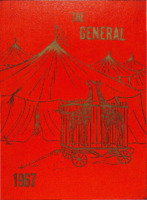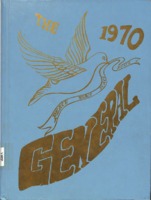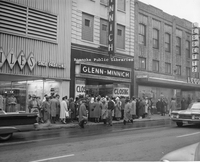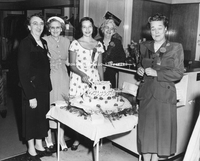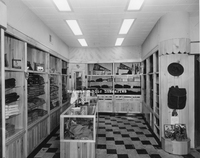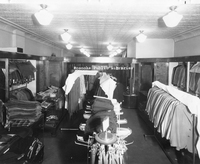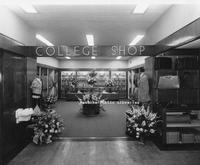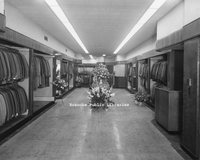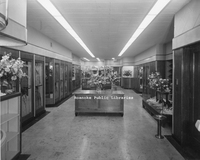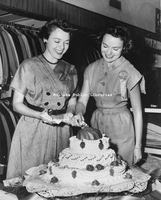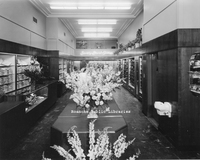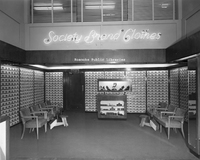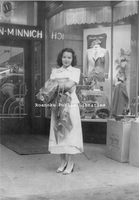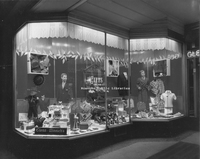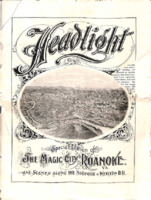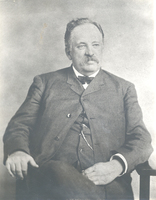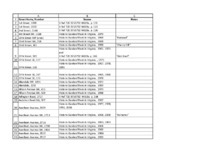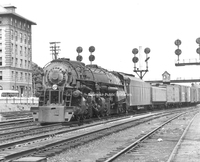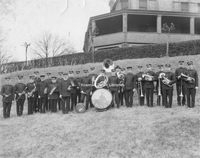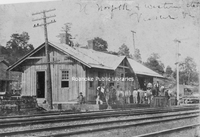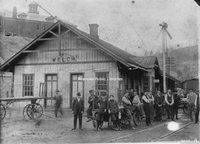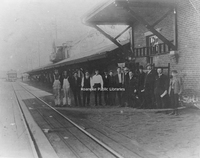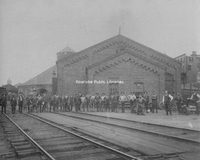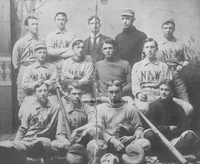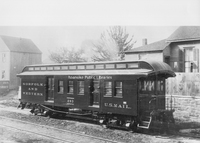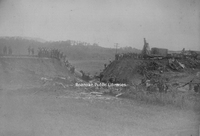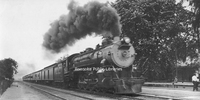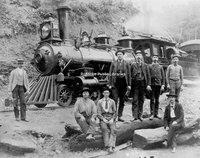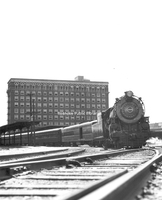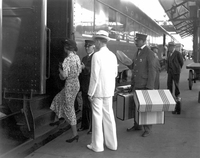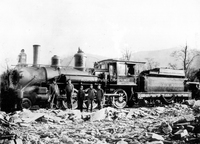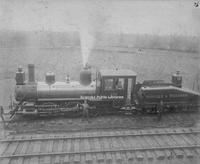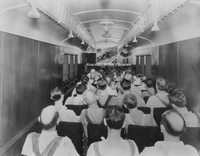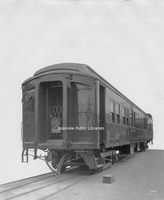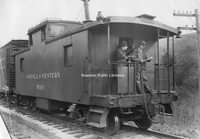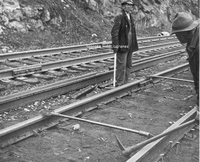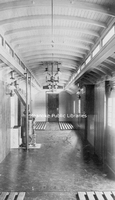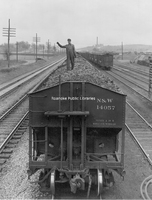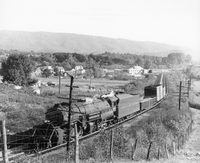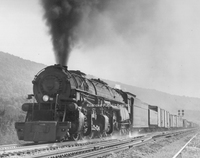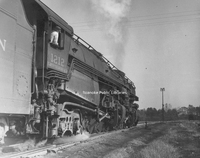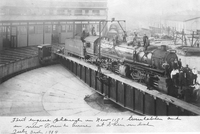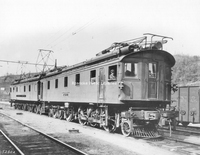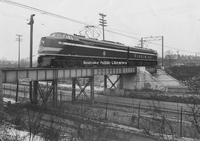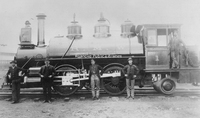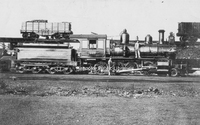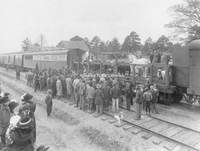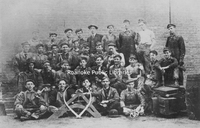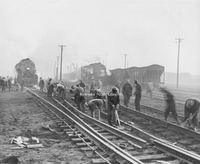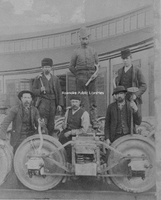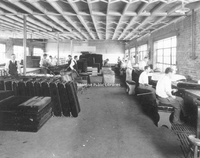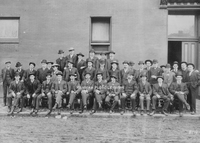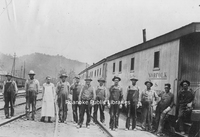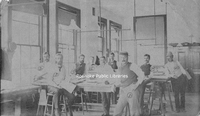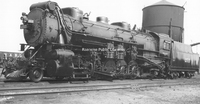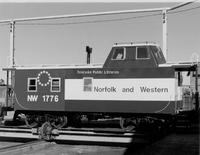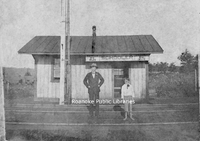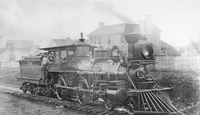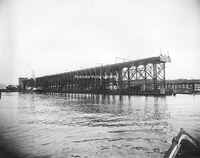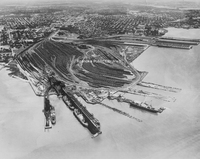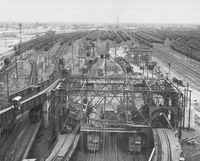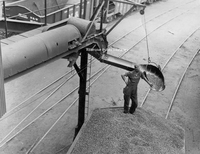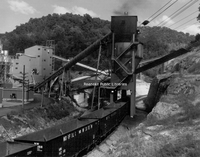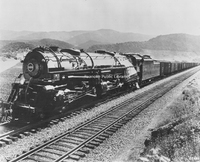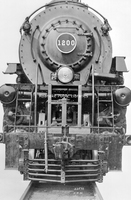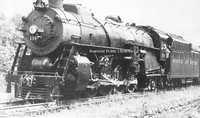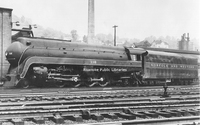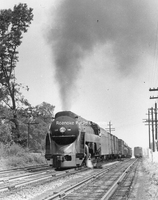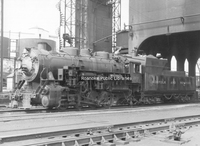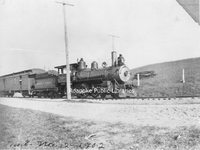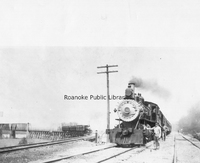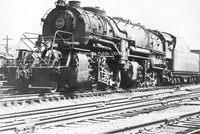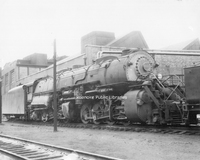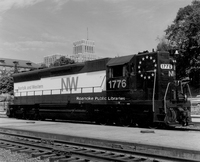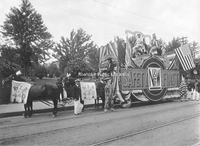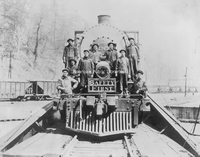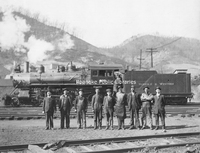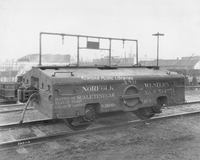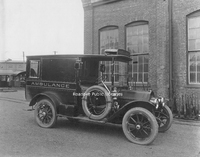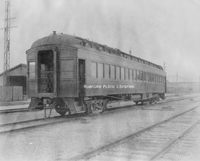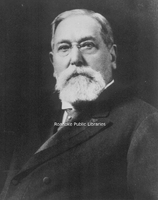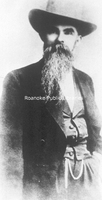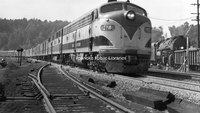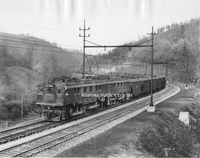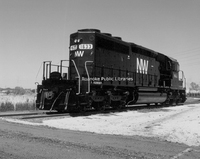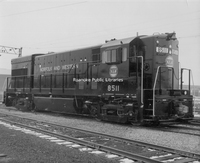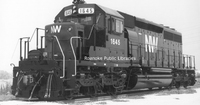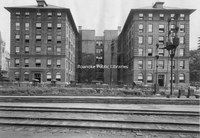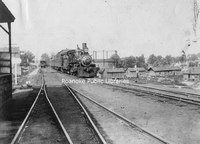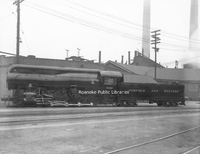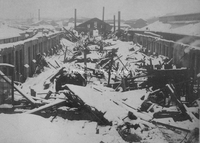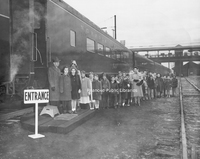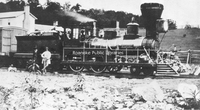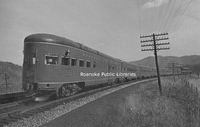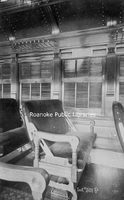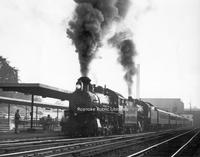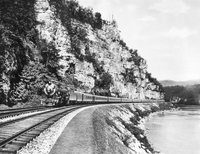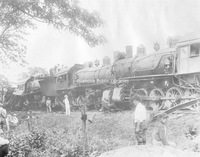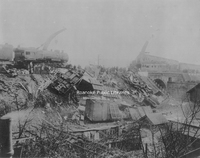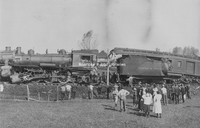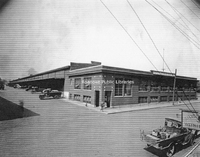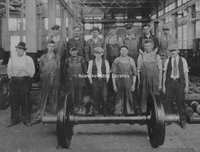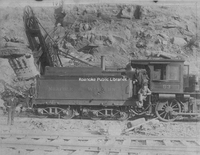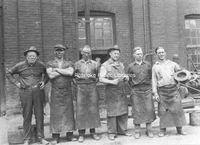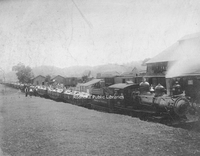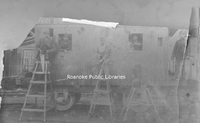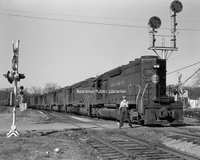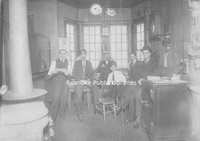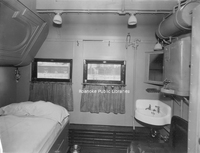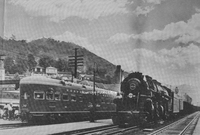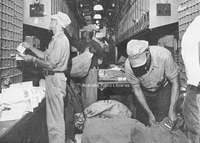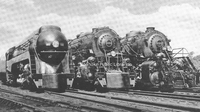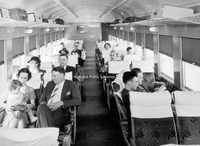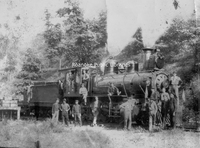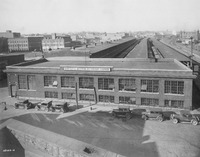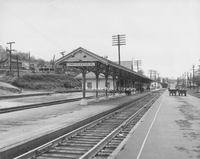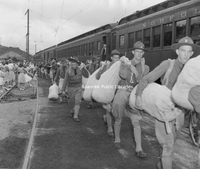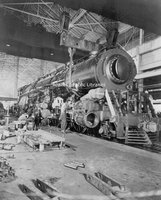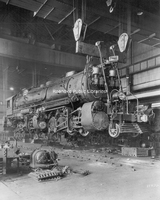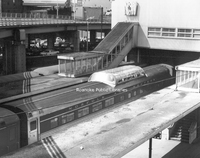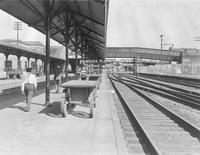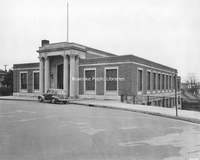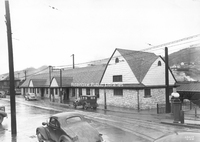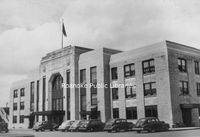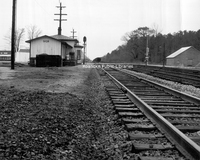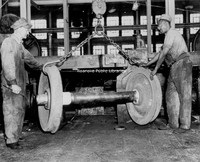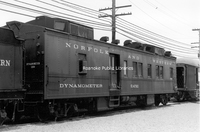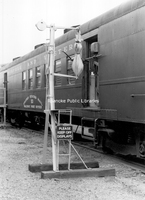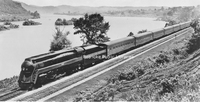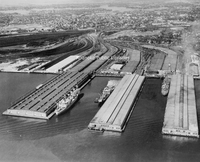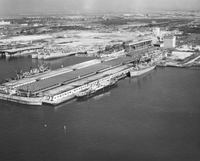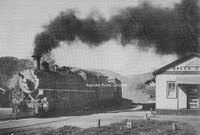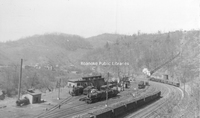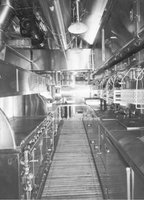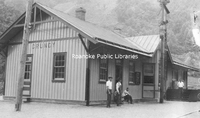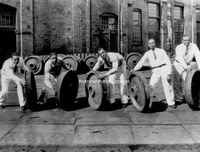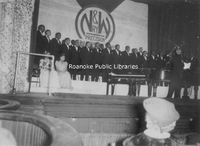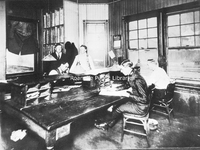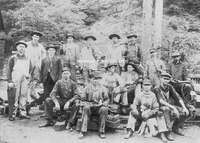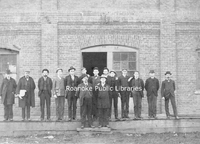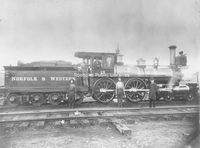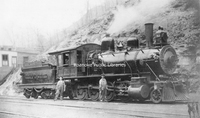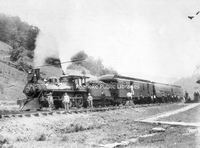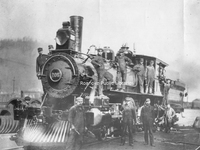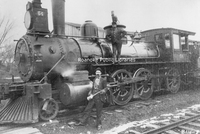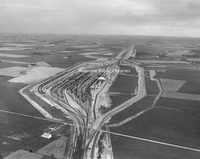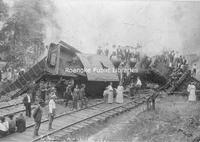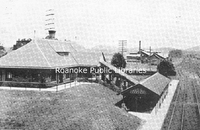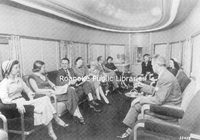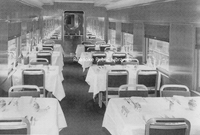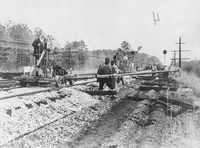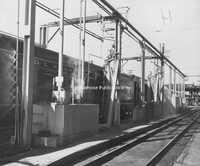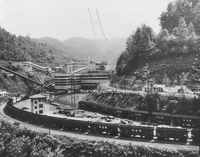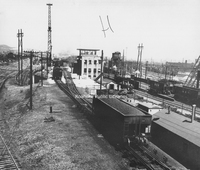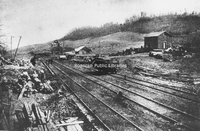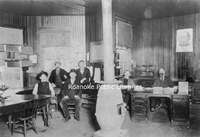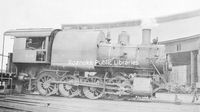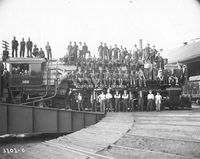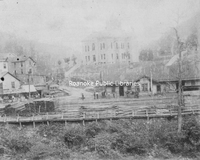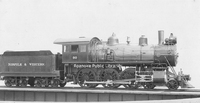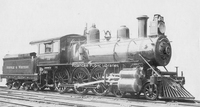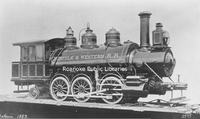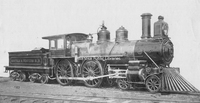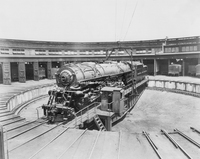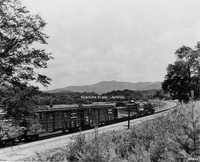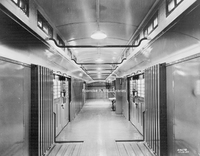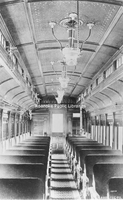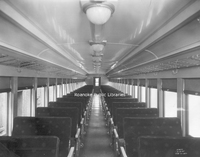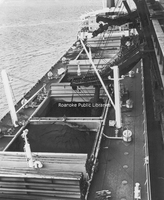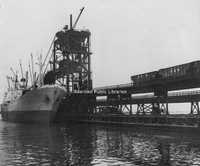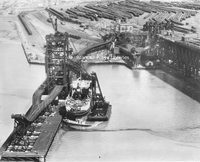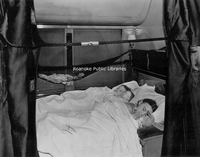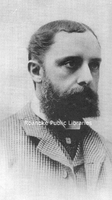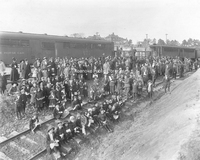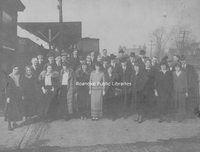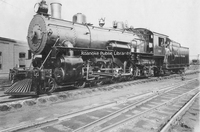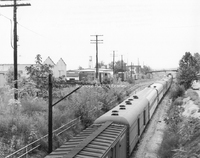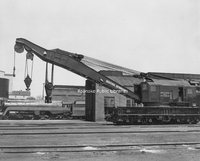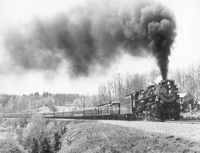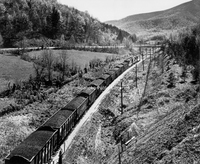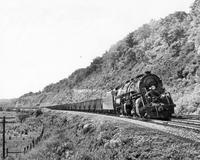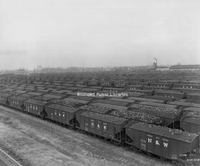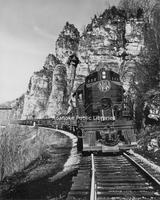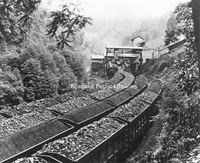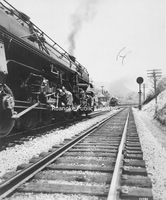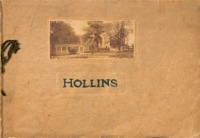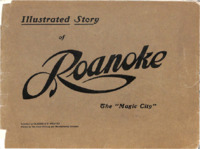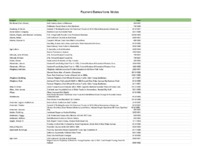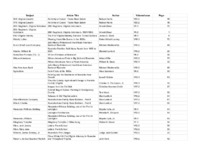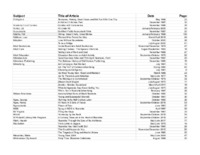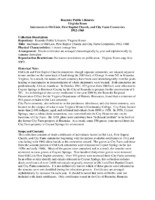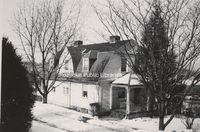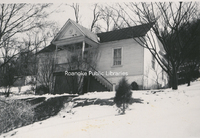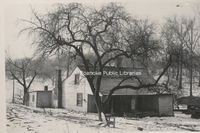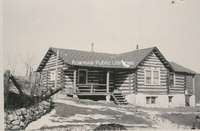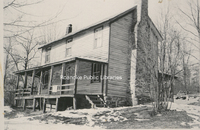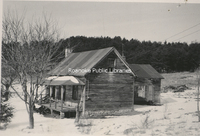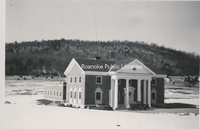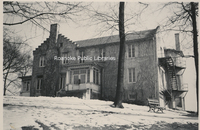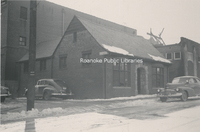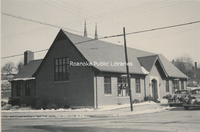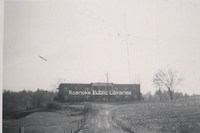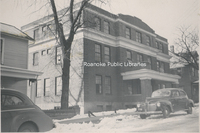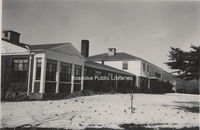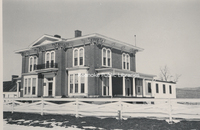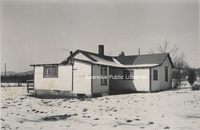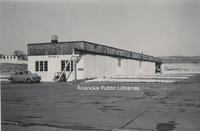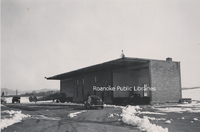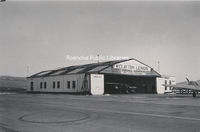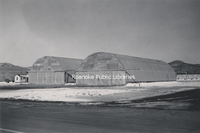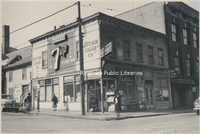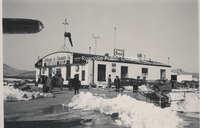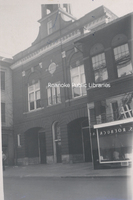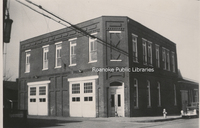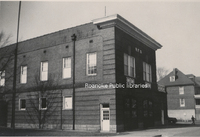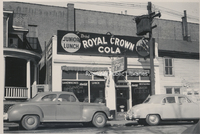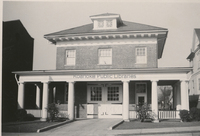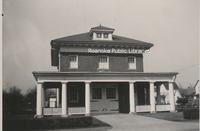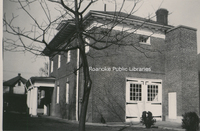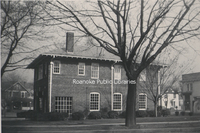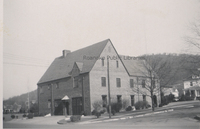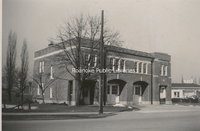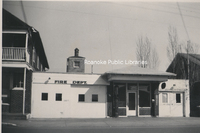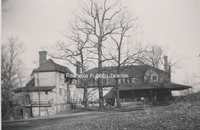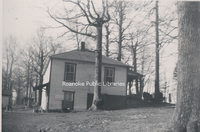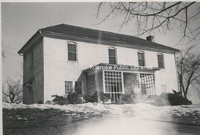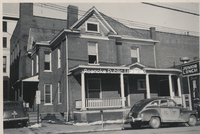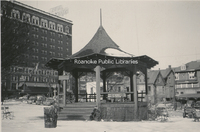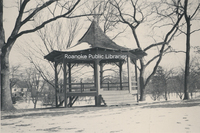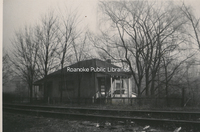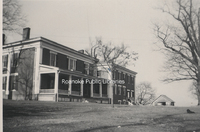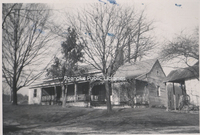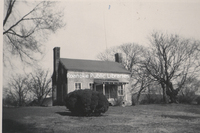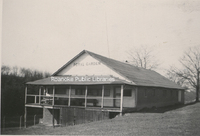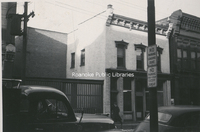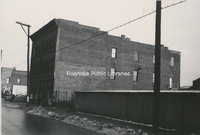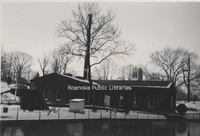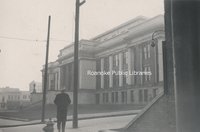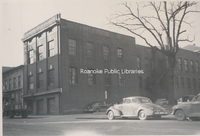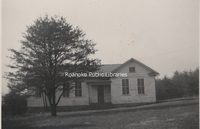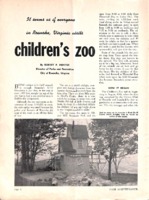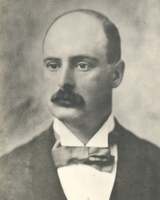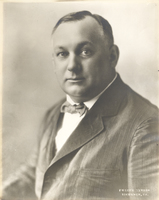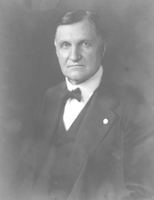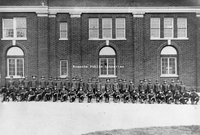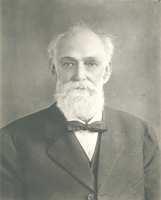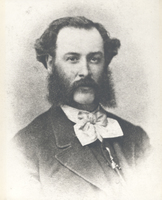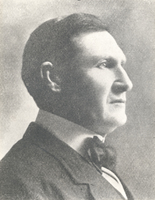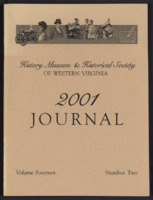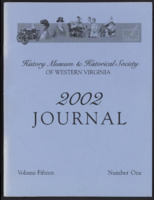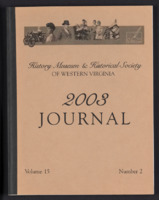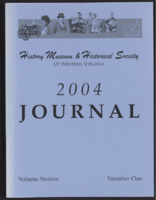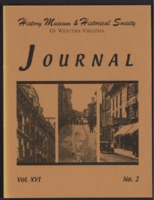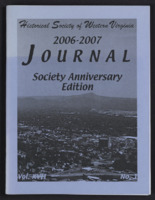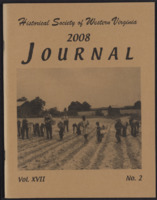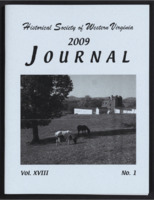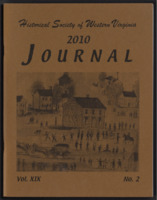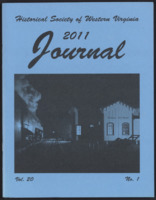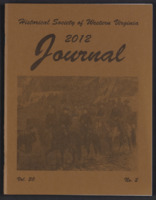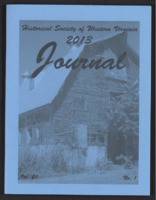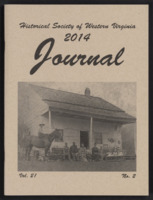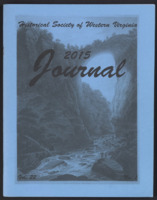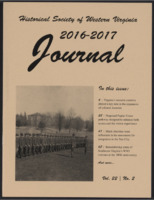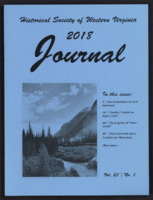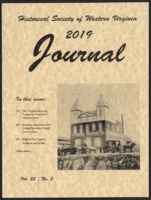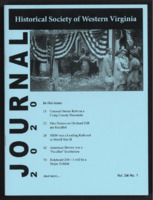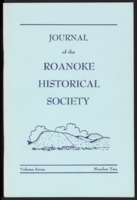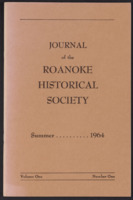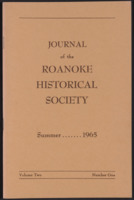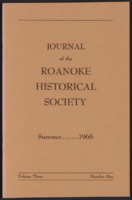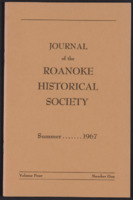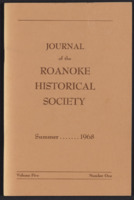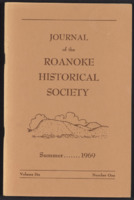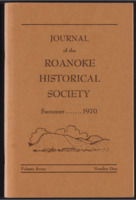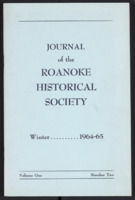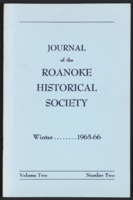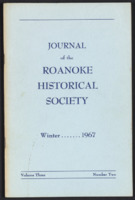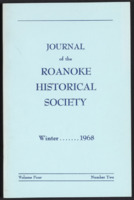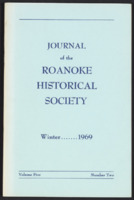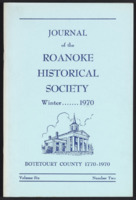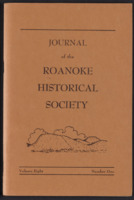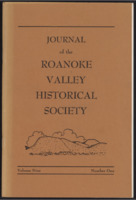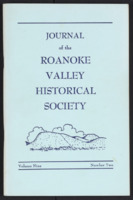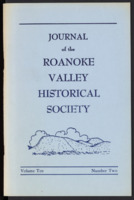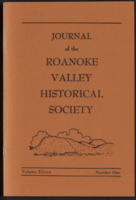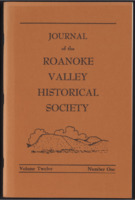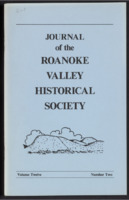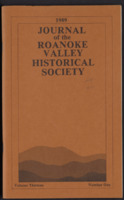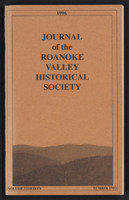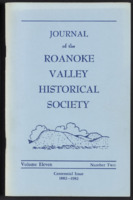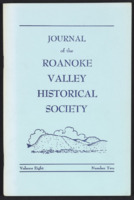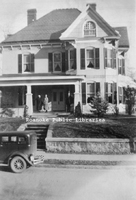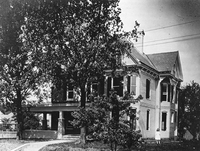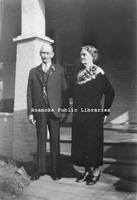Browse Items (6546 total)
FE266 Lorraine Apartments
FE267 Williamson Building
FE268 Lorraine Apartments
FE269 Roanoke Knitting Mills
Tags: Elm Avenue, mills, Roanoke Knitting Mills, Southeast
FE270 Main Street
Tags: Academy Street, aerial views, Main Street, Salem, Union Street
FE271 Roanoke Public Warehouse
FE272 Ponce de Leon Hotel
Tags: Campbell Avenue, Downtown, hotels, Ponce de Leon Hotel
FE273 Market Building
Tags: City Market, Downtown, Market Building, Market Square
FE274 Victory Stadium
Tags: athletic fields, stadiums, Victory Stadium
FE275 Victory Stadium
Tags: athletic fields, stadiums, Victory Stadium
FE276 Municipal Building
FE277 Municipal Building
FE278 Prospect Road
FE279 McBain Building
Tags: Campbell Avenue, Downtown, McBain Building
FE280 Hammond Printing
FE281 Phelps & Armistead
Tags: 2nd Street, Downtown, Grand Piano, Phelps & Armistead
FE283 Post Office
FE284 Roanoke Lodge #197
FE285 Colonial Bank Building
FE286 Roanoke Auditorium
FE287 Roanoke High School
FE288 McBain Building
Tags: Campbell Avenue, Downtown, McBain Building
FE289 Medical Arts Building
FE290 City Hotel
Tags: City Hotel, Downtown, hotels, Jefferson Street, Salem Avenue
FE291 School Administration
FE292 Crystal Spring
FE293 Jefferson Apartments
FE294 Shenandoah Building
Tags: 1st Street, Downtown, Shenandoah Building
FE295 Peoples Bank
Tags: banks, Peoples Bank, Pollard Street, Vinton
FE296 McGuire Building
FE297 Jackson Ferry Shot Tower
FE298 Coulter Building
Tags: Coulter Building, Downtown, Jefferson Street
FE299 Buena Vista
Tags: Belmont Park, Buena Vista, houses, Jackson Park, Tayloe Mansion
FE300 Roanoke Auditorium
FE301 Market Square
FE302 Melrose Baseball
FE303 Prospect Road
FE304 Observation Tower
Tags: Mill Mountain, Observation tower
FE305 Roanoke Country Club
GB01 Dr. Lawrence E. Paxton
Tags: dentists, doctors, Dr. Lawrence E. Paxton, Gainsboro
GB03 Lucy Addison High School Majorettes
GB04 Lucy Addison High School Girls' Basketball Team
GB05
GB06 Burrell Memorial Hospital
GB08 W. F. Hughes
GB09 Nursing staff of Burrell Memorial Hospital
GB10 Lucy Addison High School Football Game
GB104
Tags: Economy Shoe Repair, Gainsboro, Henry Street
GB106
Tags: children, costumes, Gainsboro, Gainsboro Library
GB108
Tags: Gainsboro, Gainsboro Library
GB109
GB12 Dr. J. H. Roberts
GB120
Tags: Gainsboro, Gainsboro Library
GB120.1
Tags: Gainsboro, Gainsboro Library
GB13 C. C. Williams
GB135
GB18 Oliver Hill
Tags: attorneys, civil rights, lawyers, Oliver Hill, Oliver Hill House
GB21 First Baptist Church Gainsboro, interior
GB24 Virginia Y. Lee
GB25 Virginia Y. Lee
GB29 Lucy Addison
GB30 Daisy Schley
GB31 Dr. John B. Claytor Sr.
GB32 Dr. John B. Claytor Sr.
GB33 Dr. F. W. Claytor
GB36
Tags: doctors, Dr. Ellwood D. Downing, Gainsboro
GB37
Tags: Canada's Ice Cream, Gainsboro, Henry Street
GB39
Left to right: John Claytor III, Sandra Elizabeth Claytor Peery, John B. Claytor Jr., and Ruth Williams Claytor. “Easter 1969.”
Tags: Claytor Family, Gainsboro
GB40
Tags: Dr. Harry Penn, Gainsboro
GB43 Dr. Ellwood Downing and Mrs. Della Downing
GB45 Dr. Elwood Downing
GB58 First Baptist Church Gainsboro, interior
Tags: African American churches, Big Lick, Big Lick Colored Baptist Church, Black Home Devotional Hour, First Baptist Church, Gainsboro, Henry Harwell Huggins, Rev. Arthur L. James, Rev. David Lee Collins, Rev. E. E. Ricks, Rev. E. L. Green, Rev. Edmond Johnson, Rev. Kenneth B. Wright, Rev. Richard R. Jones, St. John's Episcopal Church, The Church News
GB59 Rev. Arthur L. James
GB60 First Baptist Church Gainsboro, Bible School
Tags: African American churches, Bible School, Big Lick, Big Lick Colored Baptist Church, Black Home Devotional Hour, First Baptist Church, Gainsboro, Henry Harwell Huggins, Rev. Arthur L. James, Rev. David Lee Collins, Rev. E. E. Ricks, Rev. E. L. Green, Rev. Edmond Johnson, Rev. Kenneth B. Wright, Rev. Richard R. Jones, St. John's Episcopal Church, The Church News
GB61 Rev. E. E. Ricks
GB67 Harrison School
Harrison School was built in 1916 for the cost of $31,818 and opened in the winter of 1917. Lucy Addison served as the school’s first principal. Addison was responsible for gradually…
GB67.1 Harrison School
Harrison School was built in 1916 for the cost of $31,818 and opened in the winter of 1917. Lucy Addison served as the school’s first principal. Addison was responsible for gradually…
GB67.2 Harrison School
Harrison School was built in 1916 for the cost of $31,818 and opened in the winter of 1917. Lucy Addison served as the school’s first principal. Addison was responsible for gradually…
GB67.3 Harrison School
Harrison School was built in 1916 for the cost of $31,818 and opened in the winter of 1917. Lucy Addison served as the school’s first principal. Addison was responsible for gradually…
GB67.4 Harrison School
Harrison School was built in 1916 for the cost of $31,818 and opened in the winter of 1917. Lucy Addison served as the school’s first principal. Addison was responsible for gradually…
GB67.5
Harrison School was built in 1916 for the cost of $31,818 and opened in the winter of 1917. Lucy Addison served as the school’s first principal. Addison was responsible for gradually…
GB67.6 Harrison School
Harrison School was built in 1916 for the cost of $31,818 and opened in the winter of 1917. Lucy Addison served as the school’s first principal. Addison was responsible for gradually…
GB68 Harrison School
Harrison School was built in 1916 for the cost of $31,818 and opened in the winter of 1917. Lucy Addison served as the school’s first principal. Addison was responsible for gradually expanding the curriculum to…
GB69 Harrison School
Harrison School was built in 1916 for the cost of $31,818 and opened in the winter of 1917. Lucy Addison served as the school’s first principal. Addison was responsible for gradually expanding the curriculum to…
GB71
Tags: Gainsboro, Hunton YMCA
GB72
GB72.1
GB72.3
GB73
GB77
Tags: Gainsboro, transformer stations
GB77.1
Tags: Gainsboro, transformer stations
GB79
GB80
Tags: Gainsboro, Gainsboro Library
GB80.1
Tags: Gainsboro, Gainsboro Library
GB91
GB94
GB94.1
GB94.2
GB94.3
GB94.4
GB94.5
GB94.6
GB95
GB96
Tags: Gainsboro, Gainsboro Library
GB98
GB99
Tags: Gainsboro, Gainsboro School
GM001 Glenn-Minnich
Tags: Campbell Avenue, Glenn-Minnich, Leggett's
GM002 Glenn-Minnich
GM003 Glenn-Minnich
Tags: Glenn-Minnich, interiors
GM008 Glenn-Minnich
GM009 Glenn-Minnich
Tags: Glenn-Minnich, interiors
GM011 Glenn-Minnich
GM012 Glenn-Minnich
Tags: Campbell Avenue, Glenn-Minnich
HNWR001
Tags: Class A 1219, locomotives, N&W, Norfolk & Western, trains
HNWR002
HNWR003
Tags: depots, Montgomery County, N&W, Norfolk & Western, railroads, train stations, trains, Vicker
HNWR004
Tags: depots, N&W, Norfolk & Western, railroads, train stations, Welch, West Virginia
HNWR005
HNWR006
Tags: employees, Lynchburg, N&W, Norfolk & Western, railroads
HNWR007
HNWR008
Tags: mail cars, N&W, Norfolk & Western, Rail Post Office, railroads
HNWR009
Tags: accidents, James Cassell, N&W, Norfolk & Western, railroads, Thaxton, train wrecks, trains
HNWR010
Tags: locomotives, N&W, Norfolk & Western, railroads, steam engines, trains
HNWR011
HNWR012
Tags: Engine 500, locomotives, N&W, Norfolk & Western, Pocahontas, railroads, trains
HNWR013
Tags: N&W, Norfolk & Western, railroads, trains
HNWR014
HNWR016
HNWR019
Tags: Charlie Roby, employees, Engine 138, locomotives, N&W, Norfolk & Western, Radford, railroads, trains
HNWR020
Tags: employees, N&W, Norfolk & Western, trains
HNWR021
Tags: boxcars, N&W, Norfolk & Western, railroads, trains
HNWR022
Tags: cabooses, N&W, Norfolk & Western, trains
HNWR023
Tags: employees, N&W, Norfolk & Western, railroads
HNWR024
Tags: baggage cars, express cars, N&W, Norfolk & Western, trains
HNWR025
Tags: boxcars, N&W, Norfolk & Western, trains
HNWR026
HNWR028
Tags: Engine 2165, locomotives, N&W, Norfolk & Western, railroads, trains
HNWR029
Tags: Engine 1228, locomotives, N&W, Norfolk & Western, trains
HNWR030
Tags: Engine 1212, locomotives, N&W, Norfolk & Western, steam engines, trains
HNWR031
Tags: Engine 1442, locomotives, N&W, Norfolk & Western, roundhouses, trains
HNWR032
HNWR033
HNWR034
HNWR035
Tags: A.D. Lane, employees, Engine 345, Julian Hark, locomotives, N&W, Norfolk & Western, trains
HNWR036
Tags: auctions, farm trains, livestock, N&W, Norfolk & Western, trains
HNWR037
Tags: apprentices, employees, N&W, Norfolk & Western
HNWR038
Tags: employees, N&W, Norfolk & Western, railroads, tracks
HNWR039
Tags: employees, N&W, Norfolk & Western
HNWR040
Tags: employees, N&W, Norfolk & Western, upholsterers
HNWR041
Tags: B.I. Wade, C.G. Fridinger, E.F. Horgan, E.S. Kaetzel, Ed Roderick, Edgar Davis, Edward Irvin, employees, F.E. Fetterman, F.H. Wigmore, F.L. Pitzer, F.L. Zeone, Frank Bianchi, G.H. Hann, George Leisinger, H.H. Lawhorn, Ike Neff, J.F. Horton, J.L. McDonald, J.T. Withers, James Conway, John Griffin, John Smith, L.L. Hough, Louis Litsinger, Mike Fitzgerald, N&W, Norfolk & Western, Oren Ruefly, P.E. Lawhorn, Paul Wiegland, Pete Conway, Roanoke Boiler Shop, T.D Equi, T.J. Murray, Thomas Dugan, W.A. Kimmerling, W.D. Cassidy, W.E. Drabble, W.F. Dupree, W.G. Hardy, William Hough
HNWR042
HNWR043
HNWR044
HNWR045
HNWR046
Tags: cabooses, N&W, Norfolk & Western, trains
HNWR048
Tags: advertising, N&W, Norfolk & Western
HNWR049
Tags: depots, employees, N&W, Norfolk & Western, Schooler, train stations, W.H. Cord, W.H. Kegley
HNWR050
HNWR051
Tags: coal, Coal Pier 4, coal piers, Lambert's Point, N&W, Norfolk & Western
HNWR052
Tags: coal, coal piers, Lambert's Point, N&W, Norfolk & Western
HNWR053
Tags: coal, Coal Pier 4, coal piers, hoppers, Lambert's Point, N&W, Norfolk & Western
HNWR054
Tags: coal, employees, hoppers, N&W, Norfolk & Western
HNWR055
Tags: coal, coal tipples, hoppers, N&W, Norfolk & Western, trains
HNWR056
Tags: Class A, Engine 1200, locomotives, N&W, Norfolk & Western, trains
HNWR057
Tags: Class A, Engine 1200, locomotives, N&W, Norfolk & Western, trains
HNWR058
Tags: Class K, Engine 114, locomotives, N&W, Norfolk & Western, trains
HNWR059
Tags: Class K, Engine 118, locomotives, N&W, Norfolk & Western, trains
HNWR060
Tags: Class K, Engine 130, locomotives, N&W, Norfolk & Western, steam engines, trains
HNWR062
Tags: Class M, Engine 1112, locomotives, N&W, Norfolk & Western, trains
HNWR063
Tags: Class N, Engine 37, locomotives, N&W, Norfolk & Western, trains
HNWR064
Tags: Class U, Engine 76, locomotives, N&W, Norfolk & Western, trains
HNWR065
Tags: Class W, Engine 800, locomotives, N&W, Norfolk & Western, trains
HNWR066
Tags: Class Y, Engine 2023, locomotives, N&W, Norfolk & Western, trains
HNWR067
Tags: Class Y, Engine 2058, locomotives, N&W, Norfolk & Western, trains
HNWR068
Tags: Class Y, Engine 2087, locomotives, N&W, Norfolk & Western, trains
HNWR069
Tags: Class Y, Engine 2139, locomotives, N&W, Norfolk & Western, trains
HNWR071
Tags: Class Y, Engine 2200, locomotives, N&W, Norfolk & Western, trains
HNWR072
Tags: Class Z, Engine 1438, locomotives, N&W, Norfolk & Western, trains
HNWr073
HNWR074
HNWR075
Tags: floats, N&W, Norfolk & Western, parades, Union Local 440
HNWR076
HNWR077
Tags: employees, Engine 600, locomotives, N&W, Norfolk & Western, trains
HNWR078
Tags: N&W, Norfolk & Western, trains
HNWR079
Tags: ambulances, N&W, Norfolk & Western
HNWR080
HNWR081
Tags: employees, Henry Fink, N&W, Norfolk & Western
HNWR082
HNWR083
HNWR084
Tags: electric engines, Engine 2512, locomotives, N&W, Norfolk & Western, trains
HNWR085
Tags: diesel engines, Engine 1633, locomotives, N&W, Norfolk & Western, trains
HNWR086
Tags: diesel engines, Engine 8511, locomotives, N&W, Norfolk & Western, trains
HNWR087
Tags: diesel engines, Engine 1645, locomotives, N&W, Norfolk & Western, trains
HNWR088
HNWR089
Tags: Engine 20, locomotives, N&W, Norfolk & Western, trains
HNWR090
Tags: Class M, Engine 1100, locomotives, N&W, Norfolk & Western, trains
HNWR091
Tags: N&W, Norfolk & Western, snow
HNWR093
Tags: N&W, Norfolk & Western, Powhatan Arrow, trains
HNWR094
HNWR095
Tags: N&W, Norfolk & Western, passenger cars, Powhatan Arrow, trains
HNWR096
HNWR097
Tags: Engine 475, locomotives, N&W, Norfolk & Western, steam engines, trains
HNWR098
Tags: locomotives, N&W, Norfolk & Western, Pocahontas, Powhatan Arrow, trains
HNWR099
Tags: accidents, Engine 481, locomotives, N&W, Norfolk & Western, train wrecks, trains
HNWR100
Tags: accidents, Engine 43, locomotives, N&W, Norfolk & Western, Thaxton, train wrecks, trains
HNWR101
HNWR102
HNWR104
HNWR105
Tags: employees, N&W, Norfolk & Western
HNWR107
Tags: coal, Engine 53, locomotives, N&W, Norfolk & Western, trains
HNWR108
Tags: blacksmiths, employees, N&W, Norfolk & Western
HNWR109
Tags: Engine 173, locomotives, N&W, Norfolk & Western, Radford, Radford Pipe Yard, trains
HNWR110
HNWR111
Tags: diesel engines, Engine 1590, locomotives, N&W, Norfolk & Western, trains
HNWR112
HNWR113
HNWR114
HNWR115
HNWR116
Tags: Class A, Class J, Class Y, Engine 1203, Engine 2123, Engine 600, locomotives, N&W, Norfolk & Western, steam engines, trains
HNWR119
HNWR120
HNWR121
HNWR122
Tags: Christiansburg, depots, N&W, Norfolk & Western, train stations
HNWR123
Tags: depots, N&W, Norfolk & Western, soldiers, train stations, World War II
HNWR124
HNWR125
Tags: erecting shops, locomotives, N&W, Norfolk & Western, trains
HNWR126
HNWR127
HNWR128
HNWR129
HNWR131
HNWR133
HNWR134
Tags: dynamometers, N&W, Norfolk & Western, trains
HNWR135
Tags: mail cars, N&W, Norfolk & Western, trains
HNWR136
HNWR137
Tags: freight docks, Lambert's Point, N&W, Norfolk & Western
HNWR138
HNWR139
HNWR140
Tags: coal yards, locomotives, N&W, Norfolk & Western, trains
HNWR141
HNWR142
Tags: depots, Grundy, N&W, Norfolk & Western, train stations
HNWR143
HNWR144
HNWR145
HNWR146
Tags: coal, employees, Kimball West Virginia, N&W, Norfolk & Western, yardmen
HNWR147
Tags: employees, freight stations, N&W, Norfolk & Western
HNWR148
HNWR149
Tags: employees, Engine 264, locomotives, N&W, Norfolk & Western, steam engines, trains
HNWR150
HNWR151
HNWR152
HNWR153
Tags: Bellevue Yard, N&W, Norfolk & Western, railroads, railyards
HNWR154
HNWR155
Tags: depots, N&W, Norfolk & Western, Salem, train stations
HNWR158
HNWR159
HNWR160
Tags: employees, N&W, Norfolk & Western, railroads
HNWR161
HNWR162
Tags: coal, coal mines, freight cars, Gary West Virginia, N&W, Norfolk & Western, trains
HNWR163
Tags: coal, freight cars, N&W, Norfolk & Western, Portsmouth Ohio
HNWR164
Tags: Bluefield Yard, N&W, Norfolk & Western, railyards
HNWR165
HNWR166
Tags: Class W, Engine 839, locomotives, N&W, Norfolk & Western, steam engines, trains
HNWR167
HNWR168
HNWR170
HNWR172
HNWR173
HNWR174
HNWR175
HNWR176
HNWR177
Tags: freight cars, locomotives, N&W, Norfolk & Western, trains
HNWR178
Tags: express cars, freight cars, N&W, Norfolk & Western, trains
HNWR179
HNWR180
HNWR182
HNWR183
HNWR184
Tags: cargo ships, coal, Lambert's Point, N&W, Norfolk & Western
HNWR185
Tags: cargo ships, coal, coal cars, freight cars, N&W, Norfolk & Western, SS Carl Fritzen
HNWR186
Tags: cargo ships, coal, coal piers, N&W, Norfolk & Western
HNWR187
HNWR188
Tags: Frederick J. Kimball
HNWR189
Tags: auctions, freight cars, N&W, Norfolk & Western, platform cars, trains
HNWR191
Tags: Engine 550, locomotives, N&W, Norfolk & Western, steam engines, trains
HNWR192
HNWR193
Tags: Engine 131, hoists, locomotives, N&W, Norfolk & Western, railyards, trains
HNWR194
HNWR195
HNWR196
Tags: coal, Engine 2146, freight cars, locomotives, N&W, Norfolk & Western, steam engines, trains
HNWR197
Tags: coal, coal hoppers, freight cars, N&W, Norfolk & Western, railyards
HNWR198
HNWR199
Tags: coal, coal hoppers, coal tipples, freight cars, N&W, Norfolk & Western
HNWR202
Tags: locomotives, N&W, Norfolk & Western, steam engines, trains
IRB 102 Dwelling 1
Tags: Crystal Spring
IRB 122 CC Filter Plant
IRB 125 Main Library
Tags: Elmwood Park, libraries, Main Library, parks, Terry House
IRB 126 Raleigh Court
IRB 128 Gainsboro
Tags: Gainsboro, Gainsboro Library, libraries, Patton Avenue
IRB 133 Almshouse
IRB 152 Detention Home
IRB 153 Coyner Springs
IRB 23 Municipal Airport
IRB 25 Hangars A&B
IRB 26 Nose-In Hangar
IRB 27 Hangar 2
IRB 28 Hangar 1
IRB 29 Quonset Hangars
IRB 3 Mercantile Building
IRB 30 Administration Building
IRB 37 Fire Station 1
IRB 38 Fire Station 2
IRB 39 Fire Station 3
IRB 4 Mercantile Building
Tags: Church Avenue, Junior Lunch, restaurants
IRB 40 Fire Station 4
IRB 41 Fire Station 5
IRB 42 Fire Station 6
IRB 43 Fire Station 7
IRB 44 Fire Station 8
IRB 45 Fire Station 9
IRB 46 Fire Station 10
IRB 47 Rockledge
Tags: hotels, Mill Mountain, motels, Rockledge Inn
IRB 49 Elmwood Club Rooms
Tags: Elmwood Park, parks
IRB 51 Bandstand
Tags: bandstands, Elmwood Park, gazebos, parks
IRB 52 Gish House
IRB 53 Bandstand
Tags: bandstands, gazebos, Highland Park, Old Southwest, parks
IRB 66 Buena Vista
IRB 75 Keepers Dwelling
Tags: Fishburn Park, parks
IRB 83 Keepers Dwelling
Tags: parks, Washington Park
IRB 85 Shelter House
Tags: Royal Garden
IRB 97 Pump Station
IRB1 Municipal Building
IRB2 Municipal Annex
Tags: Church Avenue, municipal buildings
IRB7 Church
It Seems As If Everyone in Roanoke, Virginia Visits Children's Zoo
Tags: Mill Mountain, Mill Mountain Zoo, zoos
JLSB1 J.L. Stern Battalion
KH1 Kinsey Home
Tags: Franklin Road, houses, Old Southwest, Thomas A. Kinsey
KH2 Kinsey Home
Tags: Franklin Road, houses, Old Southwest, Thomas A. Kinsey
